I was charging my OnePlus 13 all wrong, and it was degrading my battery — here’s what you need to know [UPDATED]
My OnePlus 13 sent me a ghost notification, and it changed how I charge it forever.
![I was charging my OnePlus 13 all wrong, and it was degrading my battery — here’s what you need to know [UPDATED]](https://m-cdn.phonearena.com/images/article/172927-wide-two_1200/I-was-charging-my-OnePlus-13-all-wrong-and-it-was-degrading-my-battery--heres-what-you-need-to-know-UPDATED.webp?1754650388)
The article has been updated with new information since the initial publishing date. In order to keep the narrative intact, the latest info has been added at the end of the story.
After spending this much time with the phone, I have to admit that it has its quirks, but I’ve learned to live with those. Yes, the software isn’t perfect, but it’s way better than I expected. And as soon as I taught myself to default to the OnePlus 13’s Master mode in the camera app, everything fell into place.
Then, a while back, I started getting this weird notification.
Battery charging resumed at 95%
- My OnePlus 13, randomly
- A temporary software glitch, caused by stuck cache or a faulty update
- A dirty USB-C input port (or charger)
- An issue with the phone’s battery capacity
- A hardware issue, which meant I had to replace the phone
And since I severely dislike that last option, I opted to go through all the rest first, like any other rational human being would. After a quick inspection, my USB port and charger seemed just fine, but I cleaned them out with a cotton swab and canned air just in case (while being careful not to leave any unwanted bits in there). However, testing each potential fix one at a time would’ve taken forever, so I carried on with the next steps.
I uninstalled some apps I had forgotten about, made sure that everything was up-to-date, then deep cleaned my OnePlus 13’s cache and deleted all empty folders. After a quick restart, I was certain that if this was some sort of temporary glitch, I had taken care of it.
Last on the list was the battery capacity. To cross this one off the list, I had to drain the battery of the phone and recharge it as best I could. Then I remembered that OnePlus was one of the brands that had proprietary cable tech for a reason. So I dug deeper.
The cable conspiracy exists, and it's good for you(r phone)
![Image by PhoneArena - I was charging my OnePlus 13 all wrong, and it was degrading my battery — here’s what you need to know [UPDATED]](https://m-cdn.phonearena.com/images/articles/434096-image/BK6A9737.webp?w=1)
Image by PhoneArena
As it turns out, using a genuine OnePlus-branded cable when charging your OnePlus phone is essential. A legitimate brick is also recommended, but not mandatory if you’re someone like me.
But I wasn’t using either of those. When I bought my OnePlus 13, directly from OnePlus, I could pick a charging brick as a free bonus, but they were all out of those. I had to pick something else, and quick if I wanted to catch the discount I was aiming for.
I had already decided that I needed a new charging brick, but after comparing prices, I settled (hah!) for one from Verbatim. Why? Well, this thing has four ports:
- One USB type-A port with 30W output
- Two USB type-C port with 100W
- One USB type-C port with 65W
And if you’re a techie, you already know why this is good. This would allow me to charge or power several of my smart-things all at once, while complying with their power demand. Given that the price difference between this and the official OnePlus charger wasn’t that big, I opted for this one for the sake of convenience.
But there was a true reason for me to consider the official OnePlus brick. It enables phones like the OnePlus 13 to do one hell of a trick: 100W SuperVOOC fast-charging. Even if your OnePlus phone supports 100W charging, you won’t be able to take advantage of it unless you have an official OnePlus charging brick, specifically labeled to support 100W charging.
I typically charge my devices overnight, so this isn’t really something I’m super-interested in, which is why I decided to go for the other charger. This way, it could power my smart lamp while providing charging for my phone and my smartwatch too. This setup even leaves me with one port to spare, which makes it perfect for travelling, as this way my wife won’t need to pack her charger at all.
While she won’t need to pack her cable, I’ll have to pack mine (the right one). See, OnePlus cables have a special chip inside, which helps to communicate the correct charging speed between the charging brick and the phone. Many people refer to this as a “handshake”. And in the case of SuperVOOC charging, for example, that even means two handshakes: one between the 100W-enabled charger and the official cable, then another between the cable and the compatible phone.
This is what I had been doing wrong all along: I was using a third-party, off-brand, but high quality cable. I really liked it, because it was braided, long and had this neat little screen which told me the exact power that was going through it. And you know us tech nerds: we love our screens.
Silicon-carbon batteries are heftier than you might think
![Image by PhoneArena - I was charging my OnePlus 13 all wrong, and it was degrading my battery — here’s what you need to know [UPDATED]](https://m-cdn.phonearena.com/images/articles/434093-image/BK6A9750.webp?w=1)
Image by PhoneArena
Listen, your mileage will vary here. Our own Vic found the OnePlus 13’s battery to be lacking when compared to other modern flagships, but that’s because he’s much more of a power user than I am. As such, depending on your own habits, things might be different for you.
But in my case, the OnePlus 13 is a two-day phone in 99% of cases, and a 3-day one in 30% of them. I am absolutely comfortable with going on a two-day trip with 70% of battery on this phone, without packing a charger. That being said, I am a lite user: I prefer doing things not on my phone, I’m not big on social media and I don’t spend too much time on mobile games nowadays.
So yes: mileage may vary. But draining this phone from 80% to 0% was hard.
When I realized what I had to do, I immediately pumped up the brightness, turned on all possible toggles like Location, Bluetooth and even the flashlight. I then set a 3 hour, 4K video of the aurora borealis to play and left the phone.
I don’t play games as much, but I know some heavy hitters: Diablo Immortal and Final Fantasy VII Ever Crisis. I waited for updates (on max brightness still), then spent a bit of time in both games. Shockingly, Final Fantasy managed to knock down a notable chunk of my battery for the 40 minutes I took to complete my dailies (which I hadn’t done since I got the phone, funnily enough), but I just couldn’t take it anymore. I felt like I was wasting my time.
So I amped it up to the max: I downloaded 3D Mark’s ultimate benchmark test and ran it. And boy, does that baby drain battery (carbon or otherwise). It took one and a half runs before my battery hit 1%.
In this mode, I was limited to only using basic apps. If an app required internet access – I had to confirm that I wanted that. Ultimately, the best I could do was run a timer and a stopwatch while keeping the brightness at max levels, and the flashlight on. It took 52 minutes before the phone finally gave up and turned off.
All I could do at this point was salute it. I left it to cool down a bit, because it was running quite hot at this point. Half an hour later, I was ready to charge.
But wait – oh, no! – I can’t do that. The cable that the phone came with is USB-A to USB-C. I have such a port on my charger, but that would leave me without a light. Furthermore: the port would be in the wrong wattage, which would mean I would be charging the battery wrong yet again, and that’s the very thing I was trying to avoid in the first place.
The nightmare that is shopping for OnePlus cables
![Image by PhoneArena - I was charging my OnePlus 13 all wrong, and it was degrading my battery — here’s what you need to know [UPDATED]](https://m-cdn.phonearena.com/images/articles/434095-image/BK6A9735.webp?w=1)
Image by PhoneArena
For a moment there, I felt like I was suffering the Mandela Effect, because I could’ve sworn that I’ve seen OnePlus 13 unboxing videos and reviews where the phone came with a charger and a USB-C to USB-C cable. The missing brick, in my case, was easy enough to explain: it was a freebie that I couldn’t take advantage of, so I assumed that all of these folks had done that in my stead.
Here’s the breakdown:
- In North America and India, the OnePlus 13 comes with a 100W SuperVOOC brick and a C to C cable
- In West Europe, the phone comes only with a USB-A to USB-C cable (for the record, I’m not living in this region, yet here we are)
- In the rest of the EU, the phone comes with a C to C cable, but a 65W charger
This is incredibly confusing and weird. I’m not Tim Cook or anywhere near his level: I have no idea what black magic is behind things like supply-chains. But I believe that we can all agree that this is as anti-consumer as it gets.
Ultimately, I found out that my Microsoft Surface tablet’s charger can give me 65W of power over USB-A, so I settled (wah-wah) on using this method. But I can’t bring this massive charger everywhere with me, and I certainly can’t replace the one on my nightstand with it.
If I wanted to charge my OnePlus 13 properly, I had to spend more, and get the right type of cable.
First I stumbled upon this really cute dongle, which was exactly what I was looking for: an officially licensed USB-A to USB-C converter. And after getting my order cancelled from three different retailers, I got the message: it wasn’t just out of stock, it was out of production.
And let me tell you a bit about that: if charging the OnePlus 13 with its own proprietary cable was this important, why did the phone fail to tell me about that? Yes, there is a tooltip under the SuperVOOC charging option in the menu, which lets you know that you need an official brick and cable to take advantage of it, but that’s not the full story. You need the right cable to ensure that your OnePlus 13 isn’t getting overcharged in any other scenario, which could lead to battery degradation over time.
OnePlus, if your team is reading this: a tooltip would be handy here. But I digress.
After a lot more digging, I found a few other genuine OnePlus-branded C to C cables, but those got me even more confused. See, those were from an era, when OnePlus phones were still using Warp Charging. Do you know if there is any difference between Warp and SuperVOOC? Yeah, me neither – and I work here.
Ultimately, after checking with some people online, the products turned out to be identical, as is the technology within. “Warp” was rebranded to “SuperVOOC” as part of the Oppo acquisition, as an attempt to further integrate the brands (very consumer friendly again, might I add).
But there’s another twist: even if I use a legitimate OnePlus cable with a 100W charger, I won’t be able to reach beyond 85W in terms of speed, because only SuperVOOC-enabled bricks allow for 100W fast-charging. I know that all these options are confusing: don’t worry, we’ll review the entire thing down the line. The important thing is that I decided that 85W is good enough for me, so I got a genuine OnePlus-branded Warp Charging C to C cable for about $15, and moved on.
It might be annoying, but it works
![Image by PhoneArena - I was charging my OnePlus 13 all wrong, and it was degrading my battery — here’s what you need to know [UPDATED]](https://m-cdn.phonearena.com/images/articles/434094-image/BK6A9733.webp?w=1)
Image by PhoneArena
I don’t use my phone much in the morning, especially if it’s a work day. Typically, this means that I lose about 5% of battery passively from 9AM to 11AM. Around that time, I stop working to make myself a second cup of espresso, all the while I check my phone out of habit.
After charging my OnePlus 13 with a genuine OnePlus cable, about the time I picked up to check my phone while waiting for my coffee, my phone was still at 100%. And I can’t make this up. It’s a day just like any other, so I didn’t use it or ignore it more than I use to.
Typically, toward the end of a usual day, I’m at between 75% and 85% of battery. I checked my battery right now as I’m writing this, and I’m at 91%. Yes, I did my dailies in the one game that I play, I scrolled a bit of Instagram, I messaged my family: the typical stuff. The only thing missing was listening to music while working out, but that’s because I’m still yet to do that today. But I doubt that would drain more than another 2-3%. And that’s still a difference.
Is it a big deal? Not really. Is it notable enough? For sure. Because if not for anything else, I am now certain that I am not damaging a core component in a device, which I use daily, and have grown to love.
I’ll admit: I thought it was all marketing gimmicks to make me buy first party chargers and cables. Nowadays, this is a common tactic, which we’re so accustomed to, that it’s become harder to judge when someone is being genuine about such claims.
But I also have a bit of blame to put on OnePlus: in all of my months of experience with the OnePlus 13, the phone never bothered to tell me that it’s not happy about the way it’s being charged. I would’ve liked to know, I think you'd like to know such things too.
And I can’t believe what I’m saying, but there’s a punchline to all of this. I got that weird notification again, so despite the entire journey described above, my core issue remains unresolved. It was one heck of a learning opportunity, but I’m happy to have shared it with you.
So, after all that, I'm almost right back where I started: with a fantastic, now properly-charged phone… That sends me ghost notifications. If any of you have leads for me – I’ll be haunting the comments in the next couple of days.
The plot thickens: SuperVOOC makes a surprising appearance
Update from Aug 6, 2025:
So, about 24 hours later, I had tested out charging my OnePlus 13 with the new, genuine C to C cable, which arrived in the meantime. I was expecting a smooth ride from here on out, but I actually made some surprising new discoveries:
- Check your cables' manufacturing date: Despite the fact that the cable I purchased was listed as a "Warp" cable, it was actually manufactured in 2023, which means that it is in fact from the SuperVOOC era (as the Oppo acquisition happened in 2021; OnePlus phones were using SuperVOOC as early as 2020).
- Theory vs. Practice: Despite the fact that my Verbatim GNC-100 charger is obviously not manufactured by OnePlus, my OnePlus 13 automatically enabled and switched to SuperVOOC charging as soon as I plugged it in via the new cable. After testing it, it absolutely holds up to the expected charging speeds. And yes, it is very exciting to see a phone get charged up this fast.
While the first point can easily be explained away through retailer confusion, the second is a bit worrisome. All the documentation I read in preparation for this article pointed to SuperVOOC being a feature intended to work properly only when a full, genuine chain is established.
Sure, I expected my phone to start topping up a bit faster than before, now that a genuine cable was involved, but I absolutely did not expect seeing SuperVOOC pop up with a special animation and everything. It seemed legit, which was confusing.
Ultimately, I wasn't sure if this was a safe practice. Maybe it was a bug, but maybe it was a feature. The goal here remains the same: find the safest, most optimal way to charge my OnePlus 13, and put it into practice. So my next step was clear: reach out to OnePlus.
An official response from OnePlus
Update from 8 Aug, 2025:
I reached out to OnePlus due to two reasons: to understand if SuperVOOC charging is to be considered safe under these conditions, and what is the method that they would recommend. Here's what I got back:
Third party vendors are able to offer SuperVOOC certified chargers which adhere to SuperVOOC's technical standards and are proven to be safe to use for fast charging. While non-certified chargers can sometimes achieve SuperVOOC speeds, they may not reach our certification standards, they may not support the essential authentication between cable, charger and phone and they may be unsafe to use.
We recommend users look for officially certified SuperVOOC chargers to ensure a safe and efficient charging experience.
— OnePlus spokesperson, August 2025
At first, I was a bit taken aback by the comment, because it sounded like OnePlus really insists on us using their proprietary cables and chargers. But after a bit of thinking, I've got to admit: it is what I would do too. Consider this: the only way you can guarantee that your technology works as intended is if you use the officially licensed parts.
On the other hand, I have to admit: I'm not a huge fan of not having the ability to limit or disable SuperVOOC charging through software means. As of the time of writing, the only way that I could have my phone charge regularly is to use the genuine cable over my charger's 65W port.
And I doubt this has much to do with whether I'm using a OnePlus-branded charger or not: SuperVOOC turns on automatically, and when it does, you can't have your phone charge regularly anymore. Now do you see why I picked up the charger that I did?
Since I know that you'd ask: despite it all, the ghost notification still haunts me. I've narrowed it down to coming up at a random time after the phone has been charged, and I can now confirm it shows up regardless of whether it was charged via SuperVOOC or not.. So, yeah, if anyone has any tips for me, I'll be around.
Here’s what you need to know about charging the OnePlus 13:
- Prioritize a genuine cable from OnePlus: Unless you want to damage the phone’s battery, use OnePlus-branded cables. Topping up via third-party ones from time to time, or when travelling, won't be a deal-breaker. But you should focus on using genuine ones regularly, because that ensures that the right required amount of power is going in your phone. If you’re okay with 65W or 85W charging, you can use any compatible charger, just make sure it’s manufactured by a legitimate company – but use it with a cable from OnePlus.
- SuperVOOC requires the full kit: If you want to take advantage of SuperVOOC fast-charging — and I don’t blame you if you do, it’s awesome — you must use a OnePlus branded set of a SuperVOOC-enabled, 100W charging brick and cable, or one from a certified partner (supported Oppo chargers, for example). Just the one or the other won’t work: you need that double-handshake action. Keep in mind: some OnePlus phones can still use SuperVOOC, but at 85W or 120W, so make sure to take that into consideration. From what I can tell, even if your charger is 120W-compatible, you can still use SuperVOOC at 85W if that is all your phone supports. So, you can go lower, but obviously — not higher. Some third-party chargers might enable SuperVOOC charging on your device automatically: this should be safe so long as the charger is from a reputable manufacturer. OnePlus does make a good point though: if you care about doing things right over SuperVOOC, just get a genuine kit.
- You can't turn SuperVOOC off (but you can bypass it): As of right now, there is no software toggle that lets you disable SuperVOOC, regardless of charging means. If your phone detects that it can switch to this mode: it will. For most of you, this will be preferable and fine, but some folks out there might want to take it into consideration. If you want to ensure that your phone is using standard charging, just introduce a current about 65W — it is safe, sufficiently fast and won't enable SuperVOOC charging.
- The Warp is your friend: When it comes to OnePlus cables: don’t worry about Warp charging and SuperVOOC marketing terms. They are the same thing. Warp-era cables are notably cheaper, at least where I shopped from, so maybe that can help you out to save a buck. There are some weird claims online that USB-A to USB-C cables can top up your phone faster, but that is nonsense, don’t fall for it. It is all related to minor differences, and ultimately: the branding doesn't matter for compatibility, so buy the cheaper, genuine one.
- Don’t repeat my mistakes: Research before you buy. Depending on where you live, if you buy a OnePlus 13, it may come with a charger, but it may also come with a cable you’re not prepared for. This piece of advice extends beyond the brand: some phones don’t have proprietary charging tech, but others do. I can think of at least one great resource online, where you can check (wink-wink, PhoneArena's forums can be found here).
And if you want to learn more about how to best maintain your Android phone, check out this article that I wrote awhile back
Here's what we thought of the OnePlus 13 overall after six months:

Video by PhoneArena
Follow us on Google News





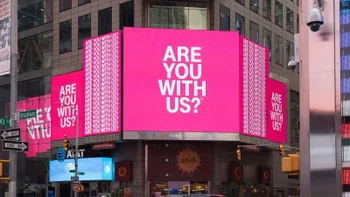
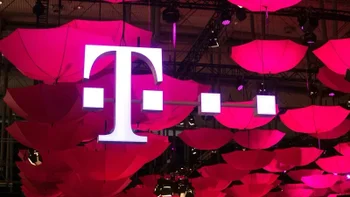
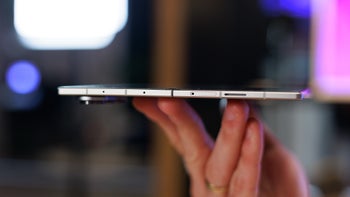

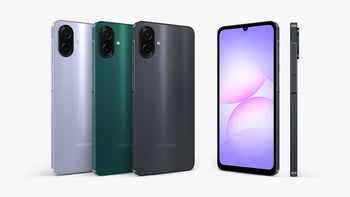
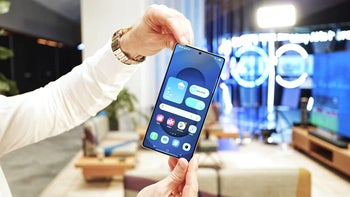
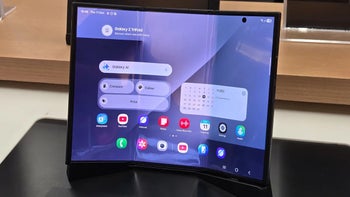
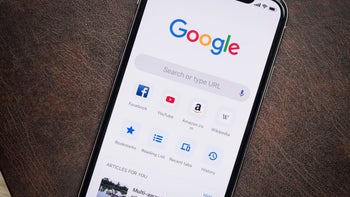
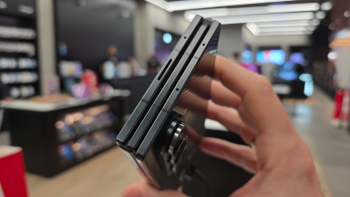
Things that are NOT allowed:
To help keep our community safe and free from spam, we apply temporary limits to newly created accounts: